The Veiled Virgin, a 19th century sculpture by Giovanni Strazza is one of those pieces of art that continue to raise questions among art historians and lovers. The bust of the Virgin Mary draped in a thin veil is remarkable for various reasons.
The craftsmanship Strazza demonstrated in achieving the veiled look, together with the mysterious symbolism of the sculpture all contribute to the uniqueness of The Veiled Virgin.
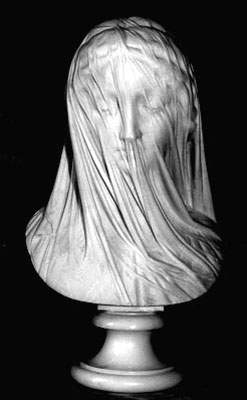
The historians believe Strazza, originally from Milan, crafted this masterpiece around 1850 while in Rome. The sculpture itself has resided in Canada for over 150 years.
According to My Modern Met, “In 1856, it was transported to St. John’s in Newfoundland, where it was received by Bishop John Thomas Mullock and placed in the Episcopal Palace next to St. John’s Basilica.”
Mullock was pleased to receive it and described it as “a perfect gem of art.” In 1862 the sculpture was gifted to the Presentation Convent and remained under the care of the convent’s sisters ever since. While Mary is not publicly displayed, one can see the sculpture via appointment.
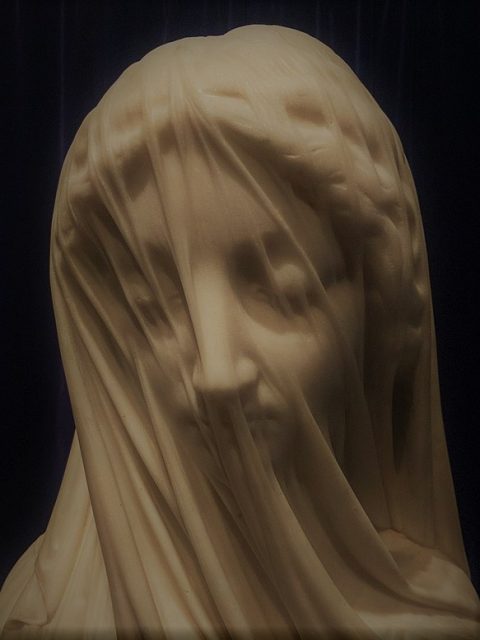
According to the Newfoundland and Labrador Heritage’s website “There are similar marble busts depicting veiled women in Canada, the United States, Ireland and England. None, however, are as meticulously crafted as the Newfoundland Veiled Virgin by Strazza.”
The Veiled Virgin represents the bust of Mary in her characteristic pose, eyes shut, head bowed peacefully praying or grieving. Her face with remarkably realistic features, including the intricate braids in her hair, is draped in a thin veil.
https://youtu.be/cO-UDb6Usq4
The sculpture is made of Carrara marble obtained from Tuscany, a material widely used among Italian Renaissance artists. From ancient Greece to the present day marble has remained beloved among sculptors due to its metamorphic properties.
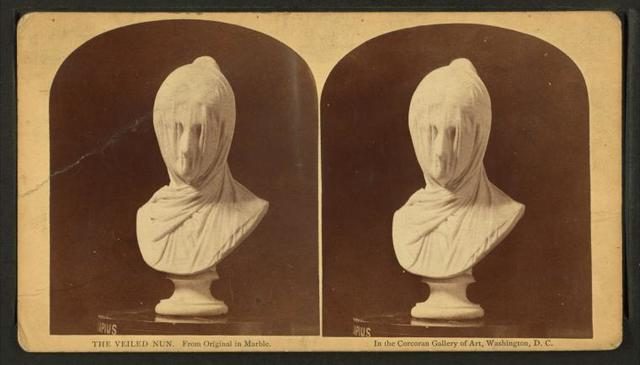
The softness and translucence of the stone allowed for crafting intricate details and flowing drapery. The material offered the opportunity for skilled sculptors to create veils, which were popular among Italian Unification or Risorgimento artists to whom Strazza belonged.
The Veiled Virgin is not a solitary example featuring the veil. Some of the most prominent ones are The Veiled Christ by Giuseppe Sammartino and the Veiled Lady by Pietro Rossi.
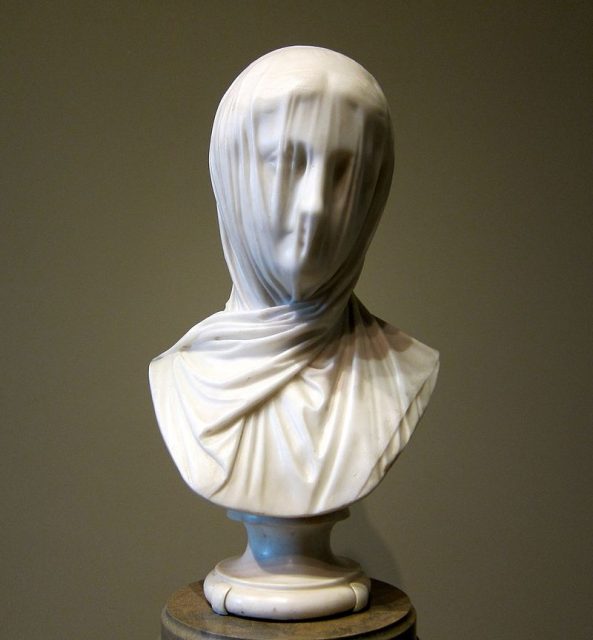
There are a couple of significant reasons why Strazza chose to include his veil while portraying the Virgin Mary. The first is connected to the general trend in art from antiquity onward. Namely, crafting a veil out of stone, however soft, is proof of incredible mastery of the craft of sculpting. From the ancient Hellenic period, over the Italian Renaissance, artists competed to create the most realistic and intricate drapery.
Claire Barbillon, the director of École du Louvre said for My Modern Met, “From an archaeological point of view, [the Veiled Virgin’s veil] stems from the tradition of ‘wet drapery’ that already existed in Greco-Hellenistic sculpture. Sculptors have always taken on this challenge.”
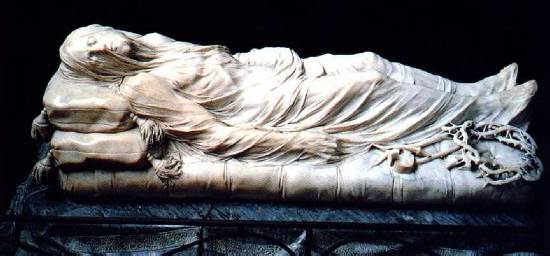
Besides the aesthetic reasons behind his choice, there is a political one — the veil motif represents an artistic response to the Italian Unification.
The artists of the Risorgimento school, like Strazza, Rossi, and Monti produced art that would embody Italy.
With nationalistic sentiments on the rise, the veiled woman became a symbol of their newly united country. The Newfoundland and Labrador Heritage shares, “Often, the image of the veiled woman was intended to embody Italia, in the same manner in which Britannia symbolized England, Hibernia symbolized Ireland, and Lady Liberty symbolized the United States.”
One mystery remains: why would Strazza choose to combine nationalistic and religious symbolism? Even though the religious beliefs of the artist are unknown, many believe he chose Mary to express his devotion.
Read another story from us: An Incredible Palace Made Entirely out of Pebbles
However, others think the reason is of a strictly aesthetic nature. He was possibly inspired by his Renaissance and Baroque predecessors who often worked with religious iconography. Be that as it may, The Veiled Virgin does not cease to impress and captivate the attention of many art lovers.
